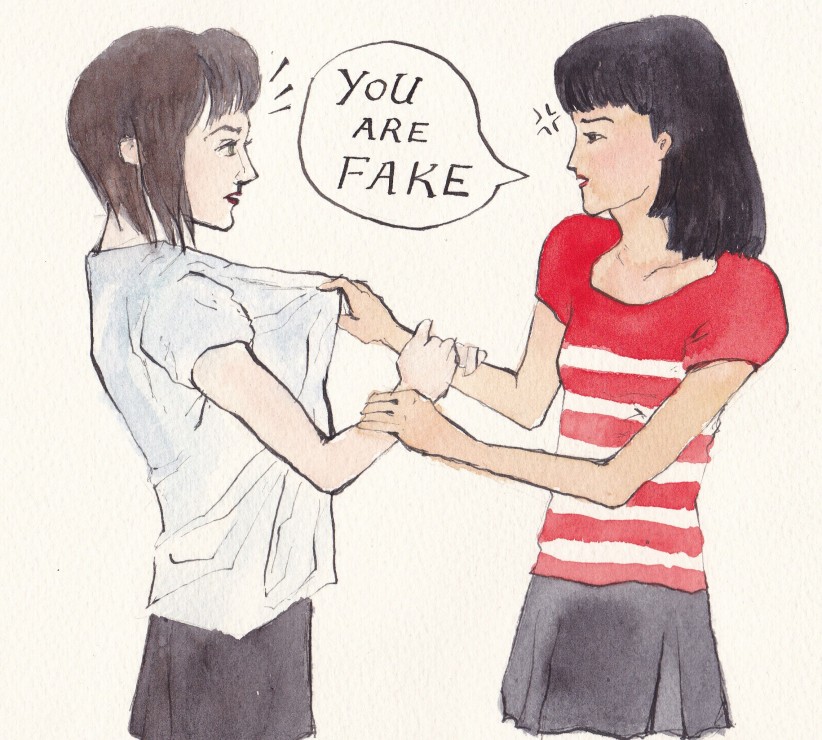As both a South Korean immigrant and a pop-culture junkie, I grew up searching for Asian representation in the TV shows and movies I watched — kind of a weird, racialized version of Where’s Waldo? I guess. More often than not, I was left disappointed by Hollywood’s portrayal of Asian characters, which varied from insensitive tropes to poorly depicted stereotypes.
When Asians appeared onscreen, they were reduced to emasculated buffoons (Long Duk Dong from Sixteen Candles), silent sidekicks (Lilly Okanakamura from Pitch Perfect), or exotic girlfriends (Knives Chau from Scott Pilgrim vs. the World). Asians were never the protagonists or the romantic heroes; instead, they were carefully placed tokens that Hollywood producers could point to and say, “See? We cast an Asian dude playing the nerdy best friend. Boom, not racist.”
Aziz Ansari’s Netflix series Master of None tackles this issue in the episode “Indians on TV.” Frustrated by the lack of diverse roles offered to Indian-American actors, Dev (Ansari) asks:“Why can’t there be a Pradeep just once who’s, like, an architect, or he designs mittens, or does one of the jobs Bradley Cooper’s characters do in movies?”
Slowly, things are starting to improve. Complex, honest depictions of the Asian-American (and Canadian!) experiences are emerging on the small-screen. Fresh Off the Boat, the aforementioned Master of None, and Kim’s Convenience manage to be funny without resorting to stereotypes, pointed without being overly political, and provocative yet mindful of immigrant struggles.
Helmed by talented Asian showrunners (Eddie Huang, Aziz Ansari, and Ins Choi, respectively) these shows are stellar examples of diversified storytelling that resonate with audiences. The fact that they have found both mainstream success and critical acclaim is proof that all stories deserve to be told — moreover, that they deserve to be told in a way that is faithful to a demographic starved of meaningful representation.
However, while television is fast becoming a platform for Asian voices to be heard, whitewashing continues to flourish in the film industry. Last year’s #OscarsSoWhite controversy highlighted Hollywood’s lack of inclusivity, prompting a backlash from audiences and filmmakers alike.
This year’s nominees are much more diverse, with well-deserved nods to Moonlight, Hidden Figures, and Fences: films that feature predominantly African-American talent. Hopefully, this is a legitimate sign of progress rather than a one-time occasion for Academy voters to pat themselves on the back for being so darn ‘socially conscious.’
On the other hand, Asian erasure in film remains a largely under-the-radar issue. I get it — not all art, least of all escapist cinema, is obligated to be social commentary. However, it’s frustrating to see roles being snatched away from Asian actors whose opportunities are already limited within the industry.
Asian erasure in Hollywood is a shameful trend that spans decades. Mickey Rooney, with taped eyelids and a heavy accent, played a Japanese caricature in the classic 1961 film Breakfast at Tiffany’s. Fifty years later, porcelain-skinned Emma Stone wore a fake tan to portray a pilot of mixed Asian ethnicity in Aloha.
A recent notorious example is the upcoming live-action remake of Ghost in the Shell, a Japanese manga and anime franchise. The fact that the protagonist was conceived as being Japanese did little to dissuade studios from casting Scarlett Johansson in the role. At one point, CGI testing to make the actress look “more Asian” was even commissioned (and ultimately rejected).
In an interview with Vulture, Fresh Off the Boat actress Constance Wu spoke out against ScarJo’s casting: “We are very invisible to the industry. Even when we have very few roles that are specifically Asian, we don’t get to audition for those. It hurts.”
Screenwriter Max Landis defended the casting choice via YouTube, blaming the lack of “A-list female Asian celebrities” necessary to carry a high-budget film as the reason behind whitewashing — basically a bunch of “That’s showbiz for ya!” platitudes.
Okay, but consider 2016’s Passengers, a sleek piece of cinematic mediocrity that underperformed both critically and commercially. Though Passengers starred Chris Pratt and Jennifer Lawrence, who are A) white and B) two of the most charming, bankable actors in the industry, even their combined star power was unable to salvage the film’s poor writing.
In contrast, 2012’s The Life of Pi starred Suraj Sharma, a then-unknown South Asian actor — went on to nab 11 Academy Award nominations, out-earning Passengers by over $300 million. Let’s just be thankful they didn’t cast Ashton Kutcher (who donned brownface for a PopChips commercial) in the role.
Refusing to cast Asian actors based on their lack of marketability prevents them from reaching A-list status — which in turn keeps them from landing big roles. It’s a vicious cycle, but one normalized by the film industry. As Landis might say: that’s showbiz for ya.
Nobody expects the Asian community to speak up; as the so-called ‘model minority,’ we remain a safe target to be ridiculed in the name of entertainment. But by voicing our frustrations and creating valuable dialogue, we can put an end to Hollywood’s white-default mentality.









